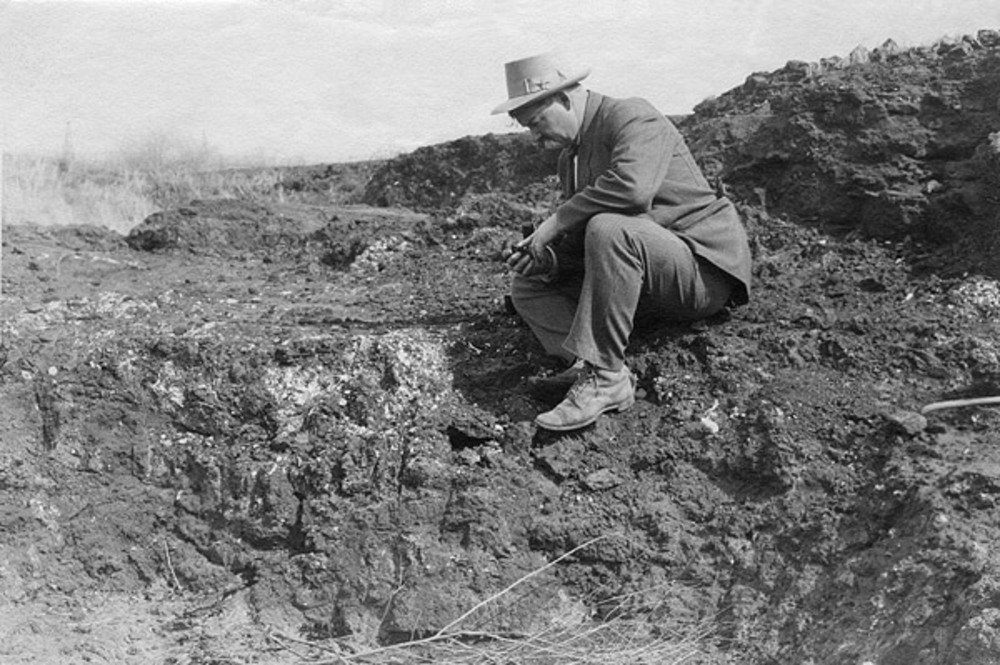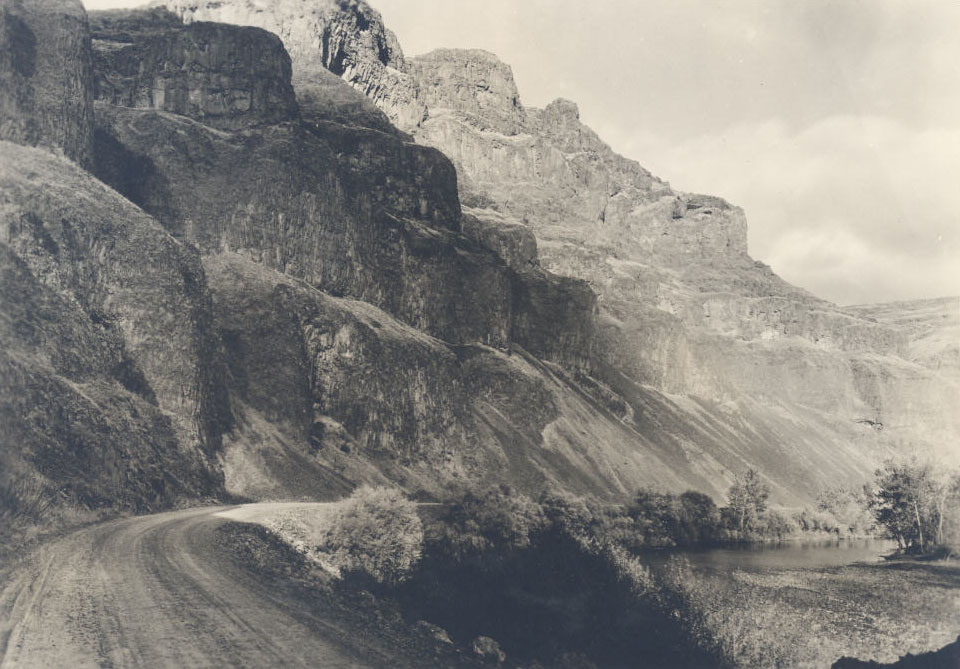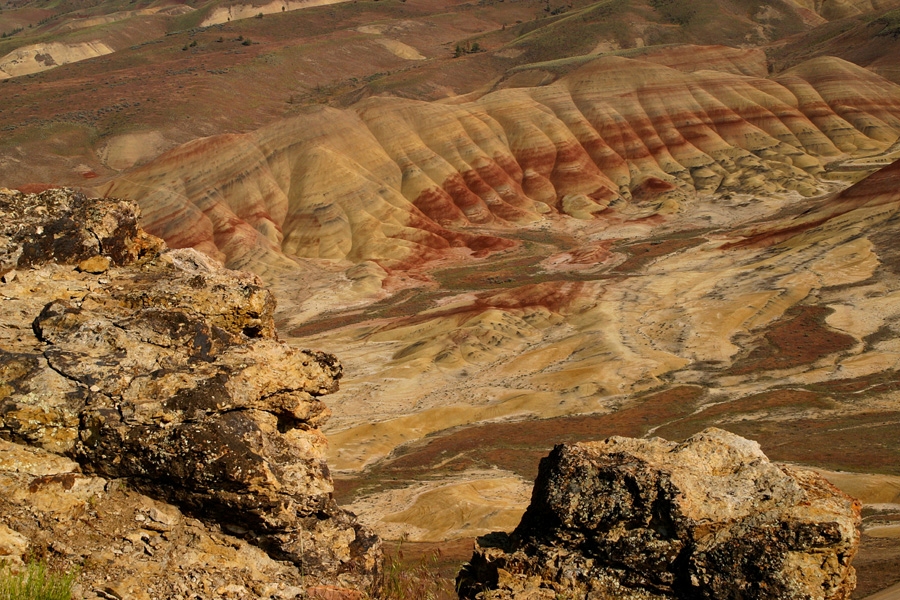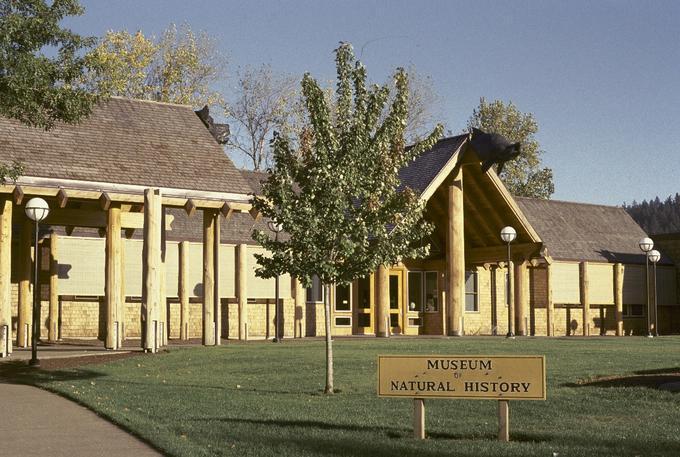Douglas Emlong was a renowned amateur fossil collector on the central Oregon Coast. “He had an unrational [sic], uncanny feeling” for finding fossils, Clayton Ray of the Smithsonian’s National Museum of Natural History told the Oregonian after Emlong’s death. “His success was absolutely unprecedented.” Emlong collected fossils from about 1955 until his death in 1980, principally along the coast in Lincoln County. He began his career in 1967 as a poorly paid, but valuable, collector for the Smithsonian Museum of Natural History, and in time amassed the largest collection of marine mammal fossils in the world, including new species and families previously unknown to science.
Douglas Ralph Emlong was born on April 17, 1942, in St. Joseph, Michigan. His father, Ralph Emlong, who owned a nursery business, died before Douglas was born, and his mother, Jennie Truax Emlong, worked at the mail-order nursery business for three years after his death. She then moved with her son to southern California for work. In 1955, when Doug was thirteen years old, they moved to Phoenix, Oregon, and shortly thereafter to Gleneden Beach.
Doug Emlong developed a passion for collecting fossils on Oregon's central coast beaches, Jennie Emlong later remembered, especially during and after storms. From about 1960 to 1967, after graduating from Taft High School (in present-day Lincoln City), he kept a store in Lincoln Beach, where he sold coral, shells, agates, and jewelry and where he maintained a museum with the increasingly large number of fossils he had found locally.
In November 1961, Emlong’s success at finding fossils was featured in a National Geographic article, “Oregon’s Sidewalk on the Sea,” by Paul A. Zahl. In the same year, Emlong came to the attention of the Museum of Natural History at the University of Oregon and its director J. Arnold Shotwell. Emlong subsequently became an unpaid researcher for the museum. When the Smithsonian Institution and scientists at the National Museum of Natural History learned about his work in 1967, they offered to purchase his collection, but the University of Oregon argued that the fossils belonged to the state because they were found on Oregon beaches. The university requested an opinion from Oregon Attorney General Robert Thornton on the question. Thornton’s opinion cleared Emlong’s title to the collection and, therefore, his right to sell it.
In August 1967, the Smithsonian paid over $30,000 for Emlong’s collection, about 290 specimens that included archaic (that is, of a previous dominant evolutionary stage) cetaceans (whales), pinnipeds (seals, sea lions, walruses), marine turtles, and several birds, including albatrosses and boobies. The collection also included fifteen previously unknown species of extinct marine mammals and two species of previously unknown extinct families. The eleven-ton collection was moved to Washington, D.C., in April 1968.
Emlong began collecting for the Smithsonian, working principally under the mentorship of Clayton Ray. He was initially paid from internal funding sources, including the Walcott Fund and the Remington Kellogg fund. Between 1967 and 1971, he was paid for specimens and for collecting fossils. He also collected specimens for the Smithsonian in Washington, California, and Maryland. Between 1971 and 1977, the Smithsonian Research Foundation paid Emlong a salary and reimbursed him for field expenses, during which period he collected 623 specimens.
While his collecting expertise remained central in his Smithsonian work, he had branched out into the study of paleontology with a 1966 paper that appeared in the University of Oregon’s Bulletin of the Museum of Natural History, on an archaic whale skeleton he had unearthed near the mouth of Beaver Creek in Lincoln County. As the number of Emlong’s finds increased, Ray wrote, his reputation grew. At the 1975 meeting of the American Institute of Biological Sciences in Corvallis, the Society of Systematic Zoology held a symposium on advances in the understanding of marine mammals. The discussion centered largely on Emlong’s collection.
Fossil-collecting was clearly Emlong’s primary passion. “Building the Emlong collection can scarcely be attributed to favorable conditions or good luck,” Ray wrote in Systematic Zoology in 1977; “rather to twenty years of singleminded commitment with an instinct for and zealousness for collecting seldom approached in the history of vertebrate paleontology.” But Emlong was also interested in music and painting. He wrote a manuscript on the “Advent of Immortality,” an amalgam of spiritual exploration, musings on futuristic technology, and the relationship of unidentified flying objects and psychic abilities to advance science, human capacities, and philosophies.
Despite his successes, Emlong led an uneasy life. He struggled with depression, various physical ailments, and, according to Ray, “personal torment.” He died on June 8, 1980, from a fall off a cliff near Otter Crest.
At least two species of ancient marine mammal were named for Emlong: the Behemotops emlongi, or desmotylian, an extinct herbivorous marine mammal of the Oligocene and the Enaliarctos emlongi, an archaic marine mammal that lived in the late Oligocene to the early Miocene. His collection at the Smithsonian remains understudied because of its size and the difficulty of preparing the specimens, many of which are embedded in the thick sandstone matrix in which they were found.
-
![]()
Doug Emlong at his store and museum at Lincoln Beach, c.1960s.
Courtesy Smithsonian Archives -
Oregonian article about Doug Emlong's death, June 10, 1980.
Courtesy The Oregonian -
![]()
Doug Emlong High School graduation photo, 1960.
Courtesy Smithsonian Archives -
![]()
The Capital Journal newspaper article about Emlong's collection going to the Smithsonian, April 2, 1968.
Courtesy The Capital Journal (Salem, Oregon) -
![]()
Emlong Fossil Museum Ad, October 10, 1962.
Courtesy The Capital Journal (Salem, Oregon)
Related Entries
-
![John C. Merriam (1869-1945)]()
John C. Merriam (1869-1945)
Born in Iowa in 1869, John C. Merriam was a geologist, zoologist, and p…
-
![John Day Fossil Beds Flora and Fauna and Climate Change]()
John Day Fossil Beds Flora and Fauna and Climate Change
The John Day fossil beds in north-central Oregon have one of the world’…
-
![John Day Fossil Beds National Monument]()
John Day Fossil Beds National Monument
John Day Fossil Beds National Monument, established in October 1975, sh…
-
![University of Oregon Museum of Natural and Cultural History]()
University of Oregon Museum of Natural and Cultural History
Located in Eugene on the University of Oregon (UO) campus, the Museum o…
Related Historical Records
Map This on the Oregon History WayFinder
The Oregon History Wayfinder is an interactive map that identifies significant places, people, and events in Oregon history.
Further Reading
“20-Year-Old Has Museum.” Salem Capital Journal, October 10, 1962, p. 45.
Maudlin, Gene. "Oregon, Musuem Fussing Over Man's Fossil Find." Salem Capital Journal, September 8, 1967.
“Board Blesses Fossil Finder.” Salem Capital Journal, September 14, 1967, p. 23.
“Coast Collection Shipped to Museum.” Salem Capital Journal, April 2, 1968, p. 12.
“Douglas Ralph Emlong.” Salem Capitol Journal, June 11, 1980, p. 30.
Sullivan, Anne. “Marine fossils great passion in life of coastal plunge victim.” Portland Oregonian, June 10, 1980, p. B3.
Berta, Annalisa. “Historical Perspectives.” Aquatic Mammals 43.5 (2017): 570-582.
Berta, Annalisa. “New Specimens of the Pinnipediform Pteronarctos from the Miocene of Oregon.” Smithsonian Contributions to Paleobiology 78 (1994).
Berta, Annalisa. “New Enaliarctos (Pinnipedimorpha ) from the Oligocene and Miocene of Oregon and the Role of “Enliarctids” in Pinniped Phylogeny." in Smithsonian Contributions to Paleobiology, Number 69 (1991).
Domning, Daryl P., Ray, Clayton E., and McKenna, Malcolm C. “Two New Oligocene Desmotylians and a Discussion of Tethytherian Systematics.” Smithsonian Contributions to Paleobiology 59 (1986).
Emlong, Doug.”A new archaic cetacean from the Oligocene of Northwest Oregon.” Bulletin of the Museum of Natural History 3-1.51 (1966).
Fordyce, Ewan. R. “Simocetus rayi (Odotontoceti: Simocetidae, New Family): A Bizarre New Archaic Oligocene Dolphin from the Eastern North Pacific.” In Cenozoic Mammals of Land and Sea: tributes to the career of Clayton E. Ray, edited by Robert Emry. Smithsonian Contributions to Paleobiology 93 (2002).
Ray, Clayton, E. “Fiscal Records of Acquisition of Emlong Collections.” July 31, 1978. Memo for the Record. Smithsonian Archives, Washington, D.C.
Ray, Clayton E. “Fossil Marine Mammals of Oregon.” Systematic Zoology 25.4 (December 1976).
Ray, Clayton E. “Obituary: Douglas Ralph Emlong, 1942-1980.” Society of Vertebrate Paleontology News Bulletin 120 (October 1980).
Ray, Clayton E., Daryl P. Domning, and Malcolm C. McKenna. “A New Specimen of Behemtopos proteus (Order Desmotylia) from the Marine Oligocene of Washington.” In Contributions in Marine Mammal Paleontology Honoring Frank C. Whitmore, Jr., edited by Annalisa Berta and Thomas A. Deméré, 205-222. San Diego, CA: San Diego Society of Natural History, 1994.
The National Museum of Natural History, Smithsonian Institution. The Magnificent Foragers. Washington, D.C.: Smithsonian Exposition Books, 1978.
Wallace, David Rains. Neptune’s Ark: from Ichthyosaurs to Orcas. Berkeley: University of California Press, 2007.









